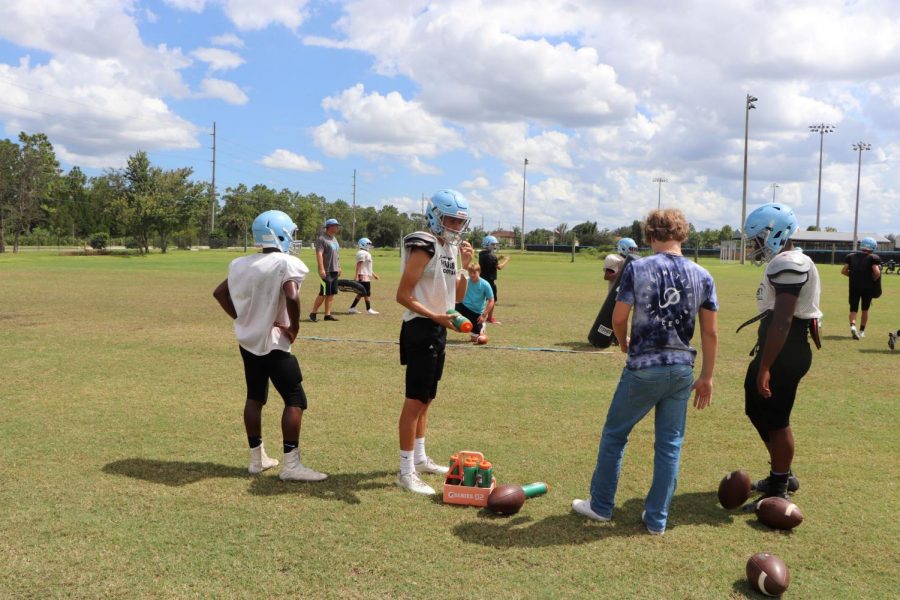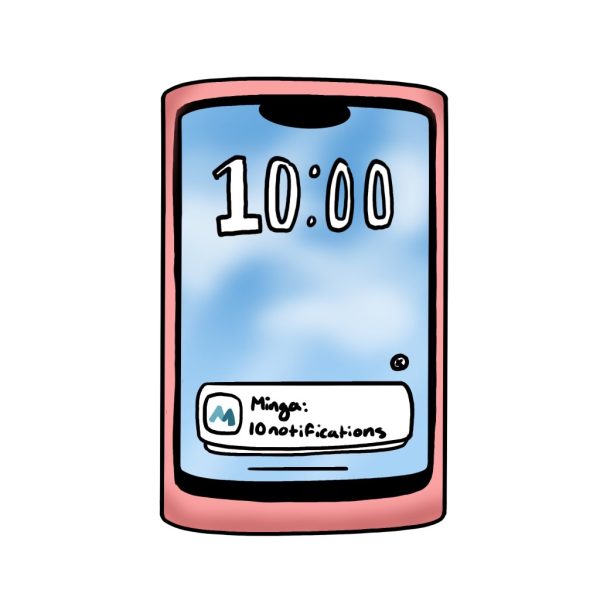In the heat of the moment
Unable to turn down the heat, athletes and band members suffer through the stifling temperatures of summer in Florida.
The sun was in full force, beating down on cross country runner Juan Chumpitaz, as he struggled to finish his second lap around the set course. Chumpitaz’s breathing was ragged, and his right lung felt like it was going to collapse from all the pressure put on it. As he neared the end of the race, his breathing was unruly, his vision faltering; Chumpitaz was going to pass out.
“For the last 15 seconds on the track, I had to give it my all and I felt myself start to black out and felt like vomiting,” said Chumpitaz.
Despite Chumpitaz managing it to the end of the race fully conscious, he had to lie down at the end, guzzling bottles after bottles of water, due to not being hydrated enough the prior day.
Dehydration and extreme heat, a deadly duo, can cause many cases of heat stroke, which is a concern for student athletes as well as others whose extracurricular activities require them to be outside.
According to the National Center for Catastrophic Sport Injury Research, “Since 1995, three football players a year on average have died of heat stroke, most of them high schoolers.”
Students spend hours daily practicing outside, yet temperatures are usually in the high 80s or 90s. These sessions range from two to three hours consisting of intense activities designed to better students.
Running back DJ McCunney feels that because of the temperature, practice is even more taxing than the game itself.
“The games usually take much more energy but practicing in the heat is worse because it’s so hot. You sweat so much, it’s easy to become dehydrated and tired,” McCunney said.
Hydration is “key” to staying healthy and active in such hot temperatures, as well as consuming nutritious foods. Marching band member Jacob Carlson drinks water before marching as well as eating energy rich food, such as fruits and granola bars.
Without the right diet, athletes can face serious consequences. Color guard and marching band member Kayden Howell recalls a fellow band mate getting overheated, as well as vomiting because of a heavy breakfast and very little water.
Besides the heat, students must also deal with the constant humid environment of Florida. Many believe that the humid heat is a much harder climate to play in than dry heat. Andrea Thompson from Live Science says, “As humidity starts to rise, the sweat beading up on your forehead can’t evaporate and provide cooling relief, because the air is already so full of water vapor, it can’t take in anymore.”
Despite its drawbacks, tennis team member Nicholas Cai recognizes the contribution of Florida’s humidity to his growth as an athlete.
“Every practice I come home soaked. It constantly feels like the air is heavy, and your sweat doesn’t dry up as fast. It’s my least preferred condition to play in but getting acclimated to it improves your game,” Cai said.
To prevent injuries caused by the sun there are many measures to take. Howell prevents sunburns and overheating by using hats, light clothing, sunscreen and sunglasses.
While the students must watch their own health, their instructors look out for them as well. Head football coach, Phil Zigler ensures his players’ health by planning the team’s practice around the temperature. During summer, he trains the players to get acclimated to the hot weather through gradually upping the amount of equipment worn. For one week, athletes will only wear a helmet and a t-shirt, the next adding pads to it. Zigler, who has spent 6 years as a coach, prioritizes safety over anything else.
“In fact, the six years that I’ve been here, I don’t even know if we’ve had a heat stroke or anything of that nature. I would rather err on the side of caution then to push a kid beyond his limits. It’s not important,” Zigler said.
Now, school has started, and the return of sports are back, as well as band and color guard. Students are working hard in the heat, and taking the right precautions against the sun, the heat and the humidity have never been so crucial to protect against heat stroke, dehydration, and cramps.
“No matter what you’re doing outside, the most important thing is to keep your thirst quenched in order to avoid getting heat stroke or dehydration,” Cai said.
Your donation will support the student journalists of Hagerty High School. Your contribution helps us publish six issues of the BluePrint and cover our annual website hosting costs. Thank you so much!







